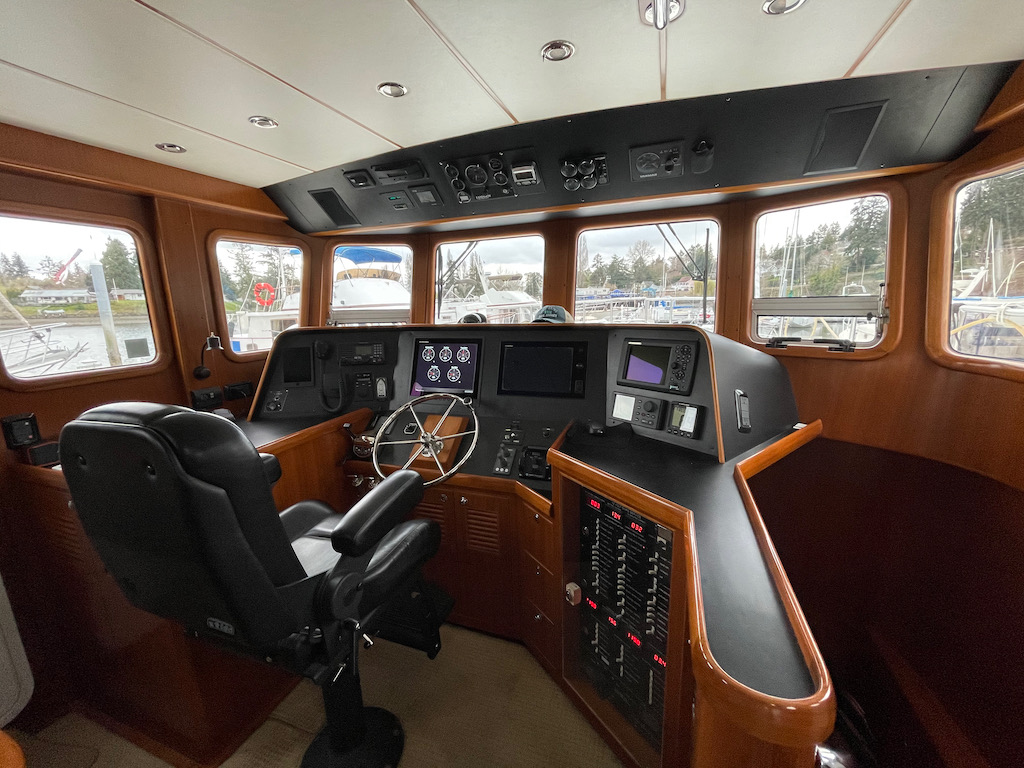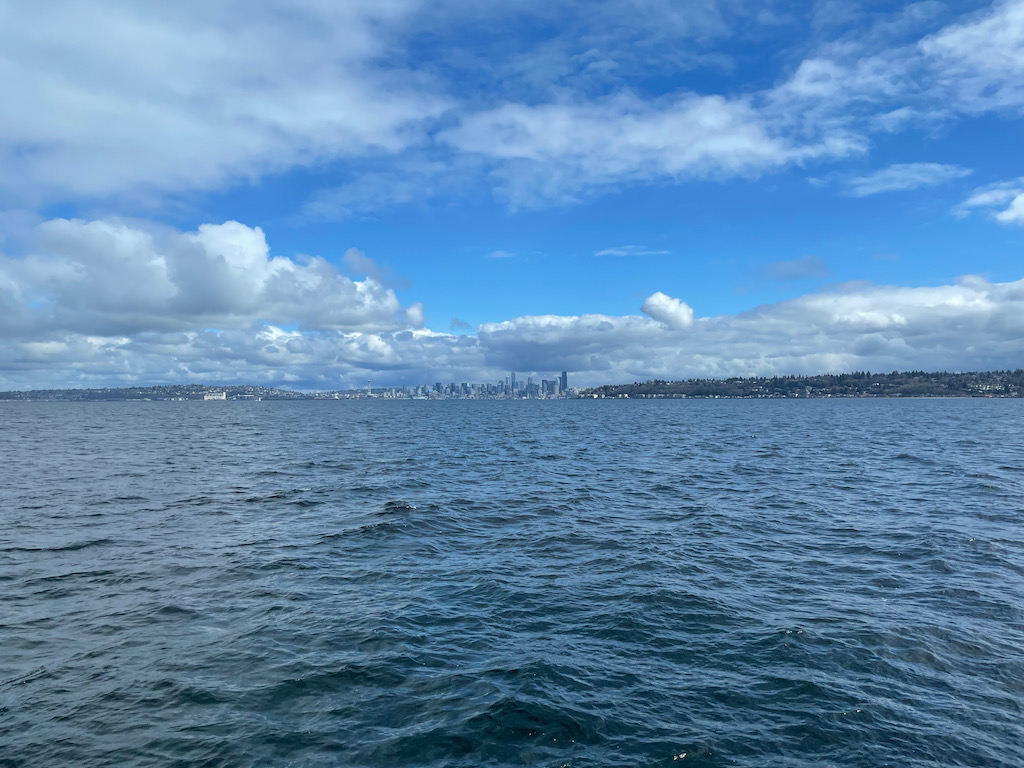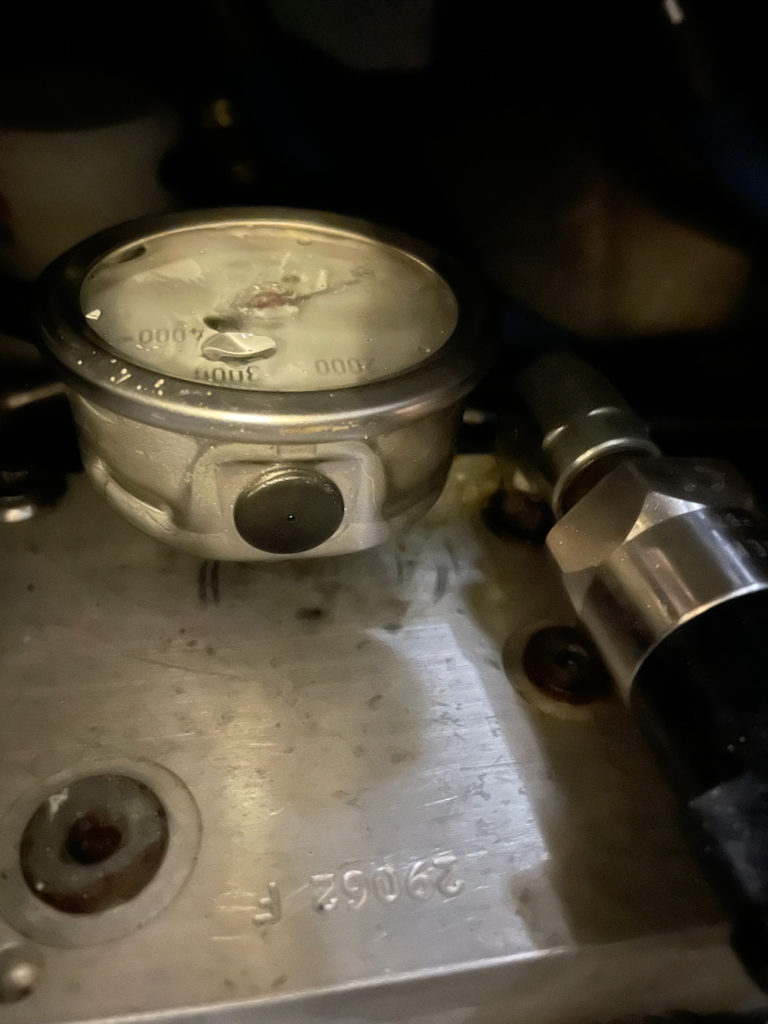Part One: The crew of Indiscretion sets out for an open-ended cruise through the San Juan Islands in early spring, but their voyage is in jeopardy within hours of departure.
The San Juan Islands are some of the most beautiful cruising grounds in the world. More than a hundred named islands and reefs with numerous state parks, anchorages, and destination marinas are scattered throughout this archipelago spanning the waters of northwestern Washington state. While currents can sometimes be tricky to navigate, the San Juans are perfect for slow boats like trawlers. The islands are close enough that your next anchorage is usually just an hour or two away, even at seven knots, and there are almost an unlimited number of harbors and inlets to explore.
We’ve made dozens of trips and are still finding new places to visit. Even with all this potential variety, we seem to return to the same places year after year because we love them so much.
Our family has spent many weeks and months boating in the San Juan Islands over the past two decades. Two separate month-long trips stand out as incredible memories we made when the kids were young. But our cruising always took place in the peak season due to school schedules and a general preference for warmer weather. Now, with an empty nest and a comfortable all-weather trawler, why not explore these northern islands in the less crowded off-season? And check out places we’ve always meant to visit, but never found the time?
As we would soon learn, cruising the San Juans in early spring is an incredible experience. Yes, the weather and wind can be a handful at times, but the deserted anchorages and parks are well worth the extra care in trip planning.
Departure
We depart Vashon at mid-morning on March 25, headed for Port Ludlow on the ebb, which is around the halfway point from Vashon to the San Juans. Rain flecks the pilothouse windows, but we are snug inside with the hydronic heater blowing warm air at our feet and music playing softly on the pilothouse stereo.
I spent the previous three days provisioning the boat and checking off maintenance tasks. I’m always nervous before casting off on an extended cruise. Will we have mechanical troubles? Do I have all the spares and tools I’ll need to fix whatever might break in a remote anchorage? These worries fade away as we put a few miles astern as the soft edges of a floating world replace the hard lines of a linear land-based life.

We enjoy a favorable current for most of the way. In the three hours it takes to travel the length of Vashon Island, we don’t encounter a single pleasure craft. Other than ferry boats, tugboats, and cargo ships, we have the sea to ourselves.

Just north of Seattle, Lisa takes the helm, and I tour the engine room. We do these visits every two or three hours to check the bilges, fuel filters, and temperatures of the engine and equipment. Usually, these inspections are ho-hum. As I wedge myself alongside the rumbling Lugger engine, I glance perfunctorily at the hydraulic system’s oil reservoir that feeds our stabilizer system. My eyes widen. Whoa! What? The oil level has fallen to dangerously low levels. In every previous check over years of doing this, the hydraulic oil level remained stubbornly topped off. Uh oh. The stabilizers minimize side-to-side rolling from waves and wakes using large fins jutting out from both sides of the hull, about four feet below the water. I return to the helm to check the stabilizer status panel just as a low oil level alarm rings out at the console. We center and lock the stabilizer fins and power down the system. Our smooth and level ride turns into a belly-churning rock and roll tumult in a matter of seconds. We decide to divert to Shilshole Marina to sort things out.
Once safely moored at the guest dock, I search the boat for the source of the oil leak. The actuators that power the fins sit inside closets within the master stateroom and head — no sign of leaks or problems there. Inside the engine room, I discover gallons of hydraulic oil sitting in the bilge. I trace the oil upstream to a pressure gauge that has failed under one of the engine room floorboards. A post on the Nordhavn Owner’s Group Internet forum confirms this diagnosis. Other Nordhavns, some far offshore, have experienced this unsettling failure and had to limp a long distance without stabilization. Many have preemptively replaced these time-bomb gauges with test ports where a gauge can be temporarily plugged into the system to check the pressure.

I share the diagnosis with Lisa as she lounges in the cockpit, warmed by the sunshine on a beautiful March Seattle afternoon, taking in the bustle of Shilshole Marina.
“Well,” she smiles. “This is as good a place to be stuck as anywhere. And you’ll figure it out. You always do.”

I toss and turn all that night, worrying about whether I can find the right parts here in Ballard without having to abort our trip. I search for nearby hydraulic outfits on my phone at 3 am when I can’t fall back to sleep.
I rise early. I am chatting with a friendly Uber driver from the Philippines at 7 am. Within an hour, I find the exact replacement gauge at Nebar Hose and Fittings in Ballard. Covich-Williams, right next door, sells me a 5-gallon bucket of hydraulic oil. I convince the Uber driver of a newer Prius to allow me to stow the bucket of oil in his trunk, and we’re on our way back to the marina. I wedge myself inside the engine room by 9 am, my first cup of coffee steaming on top of the engine’s coolant tank. Since the oil has already drained out of the system, it is a simple thing to replace the gauge. The more difficult job is removing the spilled oil from the bilge and cleaning it. I pump the oil into a waste bucket for safe disposal, but more oil soon oozes out from the upper bilge where the leak originated. After three flushes of the upper and lower bilges, I finally have a spotless, dry bilge — what a pain.
With some trepidation, I energize the stabilizer system with the engine running at the dock. No leaks. We complete a sea trial once we clear the breakwater. Again, all good. We are underway again by noon. All systems go.
Every great adventure should start with some mechanical failure and a flood of oil in the bilge; otherwise, we’d take all the elaborate systems aboard these trawlers for granted, right? And honestly, it feels good to solve a problem like this with my own two hands without having to cancel or postpone our trip.
Keep reading for Part Two of our Early Spring Cruise in the San Juan Islands: Heading North.


2 Replies to “Early Spring in the San Juan Islands: Departure Troubles”